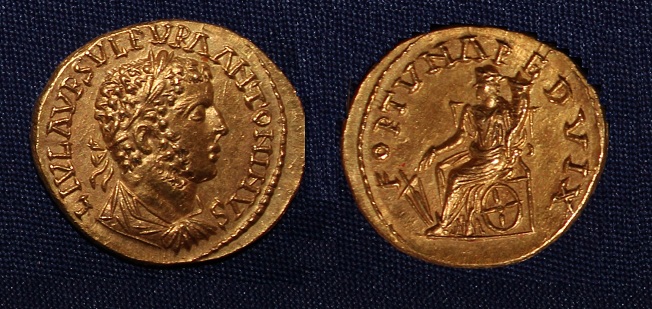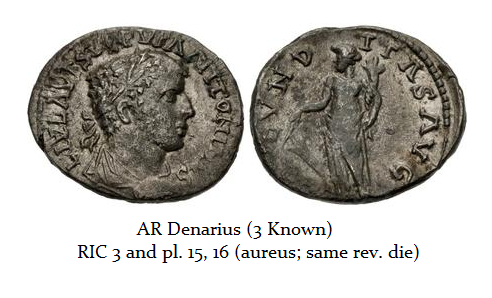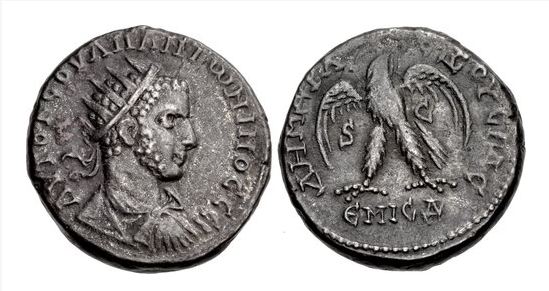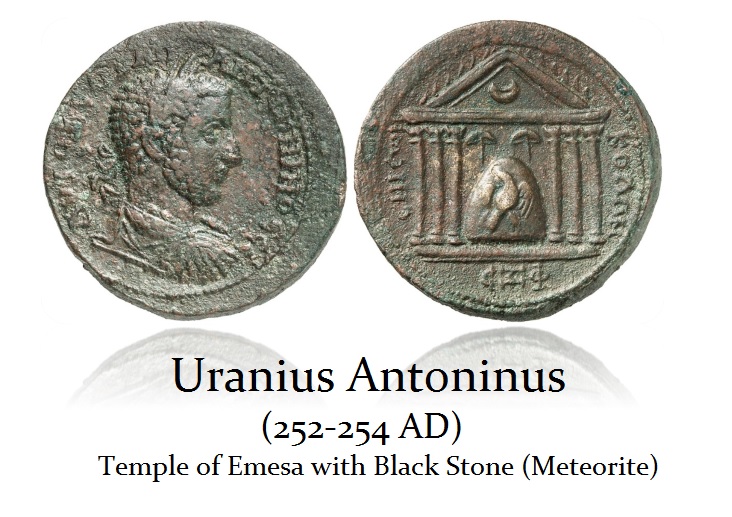Uranius Antoninus
253-254 AD
Usurper of Emesa, Syria
Julius Aurelius Sulpicius Uranius Antoninus was a usurper who rose to power in Syria. Uranius was known as the priest-king. He successfully defended Emesa against the Persian invasion led by Shapur I in 253AD. Although the Persians succeeded in sacking Antioch, they withdrew from the region. Uranius was proclaimed perhaps a local ruler or emperor during the turbulent year of 253AD, which marked the fall of Aemilian and the rise of power for Valerian I.
Uranius Antoninus is unknown from the ancient literary sources, although the historian Zosimus perhaps confuses him with two usurpers during the reign of Severus Alexander, whom he names “Uranius” and “Antoninus.” Based upon this coinage, it appears that it was just one usurper of this name Uranius Antoninus located in Emesa, modern-day Hobs in Syria. Uranius established his government at Emesa, probably in response to repeated Persian attacks rather than as a challenge to Rome. In any event, it appears he was finally subdued when Valerian marched to recover the East.
When Valerian I came to power, he was forced to pay attention to the East. He arrived in Antioch around 254 AD and spent much of his remaining time in the region. Uranius’ rebellion was easily suppressed by Valerian I for which he received the title “Restorer of the Human Race.”
The precise events that led to Uranius’ death have escaped history. It is known by his coinage that he coined money at both Emesa and Antioch suggesting that perhaps he had taken Antioch following the withdrawal of the Persian forces. His coinage also attempts to draw a connection with Elagabalus who also struck aurei displaying the Stone of Emesa, the black stone believed to have been thrown to earth by the gods during Elagabalus’ reign. It is highly doubtful that there was a blood connection between the two men. The only common bond was their shared office of the high priest in the city of Emesa.
Monetary System
Mints: Emesa (possibly Antioch)
Note: Tetradrachms were issued in Emesa and possibly Antioch. The silver content between the two issues is as different as night and day. We can easily see by even the two photographs presented here, that the Emesa issues are of high silver content in excess of 60%. The Antioch style issues with the eagle facing with wings spread appear to be mostly bronze with a very low silver content of less than 30%. The differences between these two issues is a reflection of diverse the trends of inflation were in the Eastern provinces or because it was under seige by the Persians.
Obverse Legends: Emesa Aureus & Denarius Latin
L IVL AVR SVLP VRA ANTONINVS
L IVL AVR SVP ANTONINVS
Obverse Legends: Emesa Tetradrachms Greek
- AVTO K COVΛ CЄOVHPOC ANTΩNINOC CЄ
- [AVTO K COVΛ C]ЄOVHPOC ANTΩNINOC C
- AVTO K COVΛ CЄOVHPOC ANTωNINOC CЄ
DENOMINATIONS
- AU Aureus (5.7 grams)
- AR Denarius (3 known)(struck from Aureus dies)

- AR Tetradrachm (8.13 grams)(Radiate hr rt/saddled camel right)
- AR Tetradrachm (8.13 grams)(Radiate hr rt/Tyche standing left, holding rudder in right hand and cornucopia in left)
Antioch Style Eagle Facing Wings Spread (10-12 grams)
- AE Tetradrachm – head right
- AE Tetradrachm – head left (PERHAPS UNIQUE)
Bronze Issue of Emesa
- AE32 Temple with Stone of Emesa










